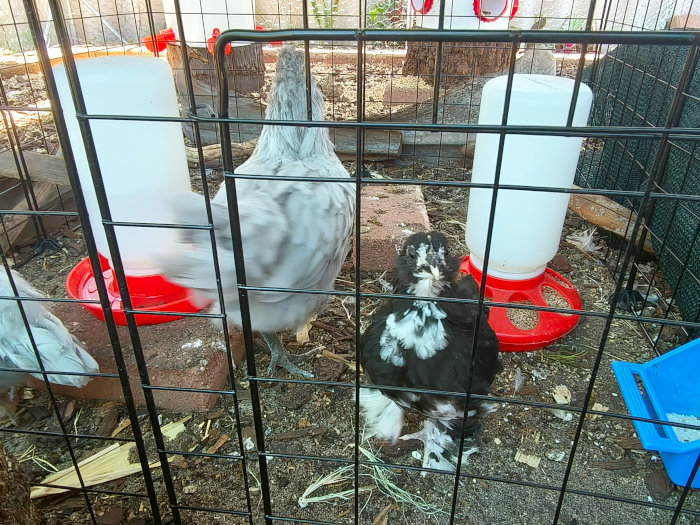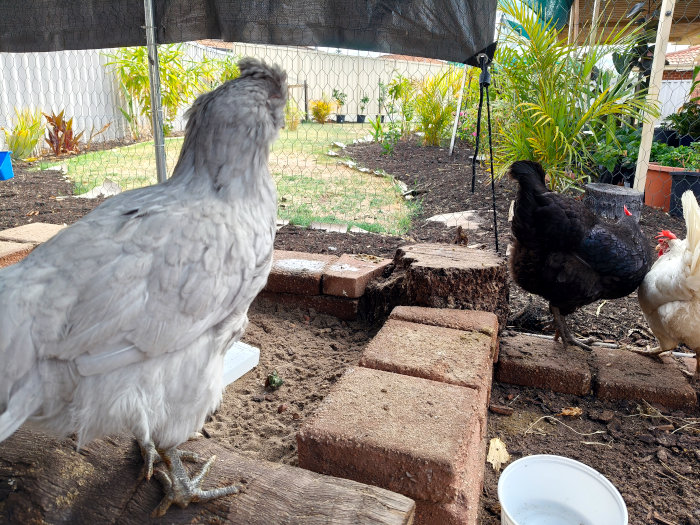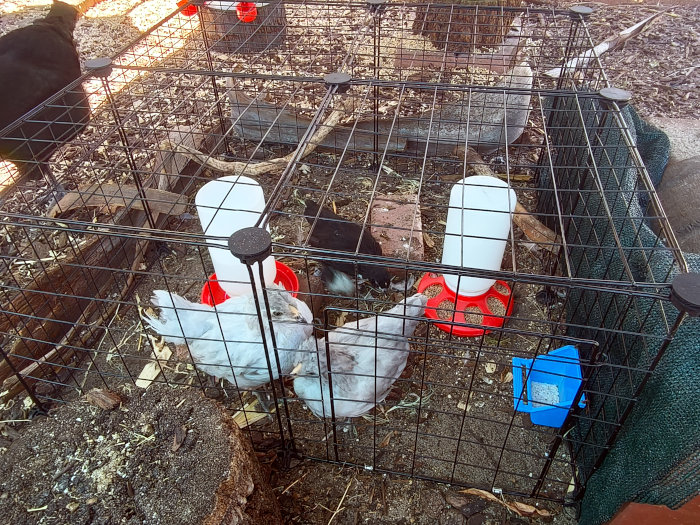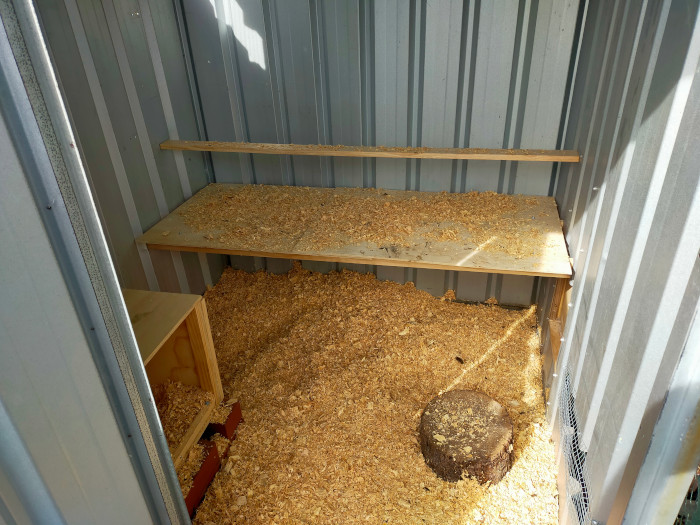Introducing new chickens to an existing flock can feel intimidating, especially with horror stories of aggression or injuries making the process seem risky. I know from experience how challenging it can be, but with the right approach, you can integrate new members smoothly and without unnecessary stress.
Today I want to share the strategies I’ve used successfully—even with very young chickens—and some essential tips to make the process easier for you and your flock.

When Can You Introduce New Chickens to the Flock?
Before you introduce new chickens to your existing flock, there are a few conditions you need to meet to ensure a smooth and stress-free integration:
Quarantine First
It’s a good idea to quarantine them for a week or two before integration. This helps prevent any potential diseases from being given to your existing flock. If you’ve been raising your chicks from days-old and they’re finally ready to integrate, you can skip this step.
Close in Age and Size
New chickens should ideally be of a similar age and size to your existing flock. Smaller chickens are more vulnerable and may get bullied by larger ones. However, you can still introduce chicks as young as 8 weeks old with the right approach.
For example, we successfully introduced our chickens at 8 weeks old, including a bantam Belgian d’Uccle, so it can be done.

Enough Space for All Chickens
One of the most important factors in introducing chickens to the flock is ensuring there’s enough space for everyone. In the run, provide at least 1 square meter (10.8 square feet) per chicken. The coop space is less important, especially if they’re only using it to roost and lay eggs.
However, if you keep your chickens in the coop during the winter months, it’s important that they have enough space to stay comfortable and stress-free. In this case, aim for at least 0.2 square meters (2.2 square feet) per chicken inside the coop.
Introduce in Small Groups
Never introduce a single chicken on its own. Bringing in a small group allows the new chickens to support each other and minimizes the likelihood of one being bullied. This also helps spread out any aggression.
Note: Chickens of different colours can sometimes be more prone to being pecked at. This usually isn’t an issue if your existing flock is made up of different breeds and colours. However, if your current flock is all the same breed and colour, it may be something to consider when integrating new chickens.
How to Reduce Fighting and Aggression
There are a few ways to reduce chicken bullying:
1. Provide Distractions
Chickens are curious creatures and can be easily distracted, especially by food. One effective way to reduce chicken bullying is to give the chickens more forage space with fresh greenery. Chickens are naturally inclined to forage, and they’ll choose this over picking on each other.
You can also place treats in hard-to-reach spots, like hanging treat bags or pecking treats, to divert their attention away from the new hens or chicks.

2. Place Obstacles and Roosts in the Run
Adding obstacles and roosts in higher places allows the new chickens to escape to a safer spot if they’re being targeted by older hens. Breaking the line of sight is useful for preventing constant bullying.
I like to place logs and small structures around the run, giving the new chickens places to retreat to when needed. I also put some cardboard down on top of the cage because they liked to retreat there.

3. Have Multiple Food and Water Sources
Chickens can be territorial around food and water, even with familiar flock mates. To help the new chickens access what they need, set up multiple food and water stations throughout the run.
4. Know When to Intervene
You want the chickens to peck a little to establish the order but if it becomes excessive, action should be taken. Some things to look out for include:
- Drawing blood
- Constant pecking
- Excessive chasing
- Ganging up on a single chicken
If you notice any of these signs, isolate the aggressive chicken in another pen for a few days. She will likely be more concerned with losing her place in the pecking order, and this break from the flock should help reduce the aggression.
You can also gently “peck” the aggressive chicken with your hand on her back to deter her. This mimics natural behaviour, reinforces your position, and lets the chicken know that aggression is unwanted.
Two Methods for Introducing New Chickens to Flock
Look But No Touch Method
This system works well for reducing stress for both you and the chickens when adding new members to the flock. Essentially, it involves keeping the new chickens in a pen that the older hens can’t access.
The new hens should have food and water in the pen, and it should be made of mesh or something see-through so the chickens can get used to seeing each other.

This approach might take a few weeks—or even longer—but it’s fairly hands-off, allowing you to worry less about things going wrong.
Introducing New Chickens at Night Method
Many people swear by this method, and it might work for some, but it’s important to proceed with caution. It’s not fool proof, and if things go wrong while you’re not around to intervene, the results could be disastrous.
Here’s how to do it:
- Wait until night when the chickens are sleepy. Chickens are generally less aggressive when they’re tired, so they’re less likely to cause trouble.
- Place the chicks in the coop, ensuring they’re positioned away from the older chickens to prevent them from being bumped during the night.
- Wake up early before the chickens to monitor the situation and ensure everything is going smoothly.

What I Did to Successfully Introduce My New Chickens
I didn’t want to put the chickens directly in the coop on the first night and chose a more gradual and safe introduction. Here what I did:
“Look But No Touch” Method
I bought a small cage with a door to keep the new chicks in. For the first few days, I kept them confined to the pen. This allowed the older chickens to get used to seeing them while keeping the young chicks safe.
Gradual Introduction
After a few days, I let them out but kept the door blocked slightly with a log, so only the small chickens could get back into the cage. One problem I found was that sometimes the big chickens would be curious about the cage entrance and block it off, stopping the small chicks from getting back in.

Tip: Chickens can squeeze into surprisingly small gaps, so it might take some testing to see what works for you.
Fixing the Cage Setup
To fix this, I removed one of the walls on the back of the cage, creating two entrances/exits for the small chickens. This allowed them to go in and out of the cage as needed. It was important for me to monitor the chickens during this time and intervene if necessary.
Supervised Time with the Flock
I kept food and water in their cage and locked it up every night to protect them from predators. After a few days, I would open the cage and let them roam during the day, confident they could escape to their safe zone if needed.
It takes a little time for the new chickens to learn how to steer clear of the older hens to avoid being pecked, but they usually figure it out within a day or so.
Overnight in the Coop
After about 4 weeks of this system, our older hens were comfortable enough with the new chickens that I decided to place them in the coop overnight.
The next morning, the older hens were more focused on leaving the coop to eat than on the newcomers inside. Introducing them at night seemed to further reduce the aggressive hen’s behaviour.
Continued Monitoring and Integration
After a few nights in the coop, the integration was much smoother. While the aggressive hen still occasionally chases them to peck, the flock is now much more integrated and peaceful.
Interestingly, the bully hen is actually the lowest on the original pecking order. My theory is that she’s extra worried about her already low status, which could explain her increased aggression toward the new chicks, while the other hens seem to leave them alone.

My Key Recommendations:
- Start with Look and no touch method.
- Give new chickens supervised time with the flock.
- Use a modified cage setup for unsupervised time with flock.
- Then try leaving in coop overnight.
This is the least stressful and most fool proof way to introduce new chickens to an existing flock—for both you and the chickens.
How Long Does it Take For New Chickens to be Accepted?
In the best-case scenario, it will take around 2 weeks for your chickens to be accepted into the new flock. However, don’t be surprised if it takes much longer—even months.
In our case, it took about 4 weeks before I felt confident enough to put them in the coop together. After that the flock was peaceful, with only minimal pecking from our particularly aggressive hen.
I will keep the small cage system inside the run for another 4 weeks at which point the new chicks will reach maturity and be closer in size to the older hens.
Conclusion
Starting with the right conditions is key to setting yourself up for success, just like with the basics of looking after chickens, where a solid foundation makes all the difference. Every flock’s dynamics are different, so careful monitoring and adjustments are the way to go.
By using the methods we’ve discussed, you can tailor them to suit your setup and flock, ensuring a smooth and successful introduction for your new chickens.



